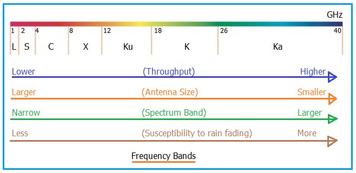10 GPS/GNSS Interview Questions and Answers
Prepare for GPS/GNSS job interviews with this guide to 10 questions and answers. Covers GPS functionality, components, accuracy factors, and applications.
Showing 25 posts (Page 1 of 3)
Advertisement
Prepare for GPS/GNSS job interviews with this guide to 10 questions and answers. Covers GPS functionality, components, accuracy factors, and applications.
Learn the key benefits and challenges of CCSDS protocols, covering interoperability, robustness, modularity, complexity and resource requirements in satellite systems.

Learn how to make and receive calls using an Iridium satellite phone, including dialing codes for various international scenarios.
Compare UAV (i.e. Drone) vs HAPS vs Satellite and explore key differences between UAV, HAPS and Satellite.

Explore the benefits and drawbacks of DVB-S2, a digital television broadcast standard succeeding DVB-S, including its features, applications, and limitations.
The EUTELSAT 25B/Es'hail 1 satellite, a collaboration between Eutelsat and Es'hailSat, launched successfully. It offers Ku and Ka-band services for the Middle East, North Africa, and Central Asia.
Explore the differences between Fixed, Mobile, and Broadcast Satellite Services (FSS, MSS, BSS), including applications and infrastructure.

Explore the pros and cons of Geostationary Earth Orbit (GEO) for satellite communication. Discover its coverage, signal delay, and suitability for various applications.

Explore the different types of satellites - GEO, LEO, and MEO - and their respective functions in communication, navigation, and Earth observation.

Explore geosynchronous and geostationary satellite formulas with our calculator. Determine speed, angular velocity, and orbital period for satellite system design and operation.

Explore the key differences between geosynchronous and geostationary orbits, including their applications in communication, weather monitoring, and navigation.

Explore the distinctions between GIS (Geographical Information System) and Remote Sensing, focusing on their applications, data sources, and functionalities in analyzing geographic data.
Learn about the various frequency bands used by GNSS systems like GPS, GLONASS, Galileo, Compass/Beidou, and IRNSS. This article provides details on L1, L2, L5, and other frequencies.

Explore the differences between GNSS and GPS, including their architecture, satellite systems, accuracy levels, and applications in various industries.

Explore the Global Positioning System (GPS), its components, functionality, advantages, and limitations in providing precise 3D position fixes.

Explore the essentials of GPS receiver modules, including block diagrams, measurement techniques, and a list of prominent manufacturers.

Explore the Global Positioning System (GPS) satellites, including their components, functions, applications across various industries, and key manufacturers.

Understand the GPS sensor function, its working principle, and how it uses satellite signals to determine location. Explore the components of a GPS system.
GSAT-7, a multi-band communication satellite, has been successfully placed in geostationary orbit after its launch on August 30th. All transponders are functioning nominally.

Explore the pros and cons of using Highly Elliptical Orbits (HEO) for satellites, including characteristics, applications, and comparisons to other orbits.

Explore Iridium Next, the upgraded satellite constellation, its features like enhanced data speeds, IoT applications, and improvements over the original Iridium system.

Learn about Iridium satellite phone country codes for making and receiving calls. Understand how to dial Iridium phones and their global coverage.

Explore Ka band frequencies (27-40 GHz), advantages like high-speed data, and applications in satellite communication, radar, and space telescopes.
Explore the diverse applications of satellites, from surveillance and navigation to television distribution and satellite phones. Learn how these technologies have transformed various aspects of modern life.

Explore leading satellite manufacturers in India, the UK, and the USA, highlighting their contributions to domestic and international space exploration.
Advertisement